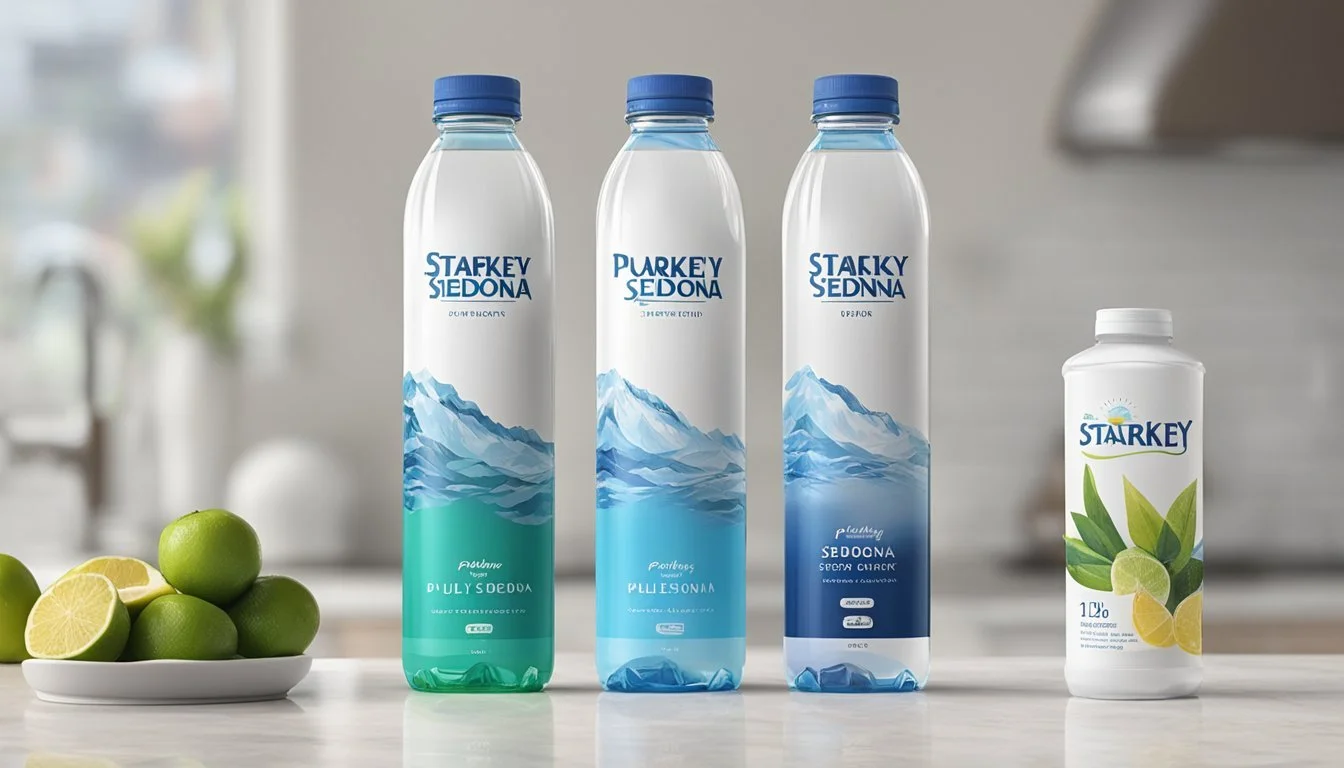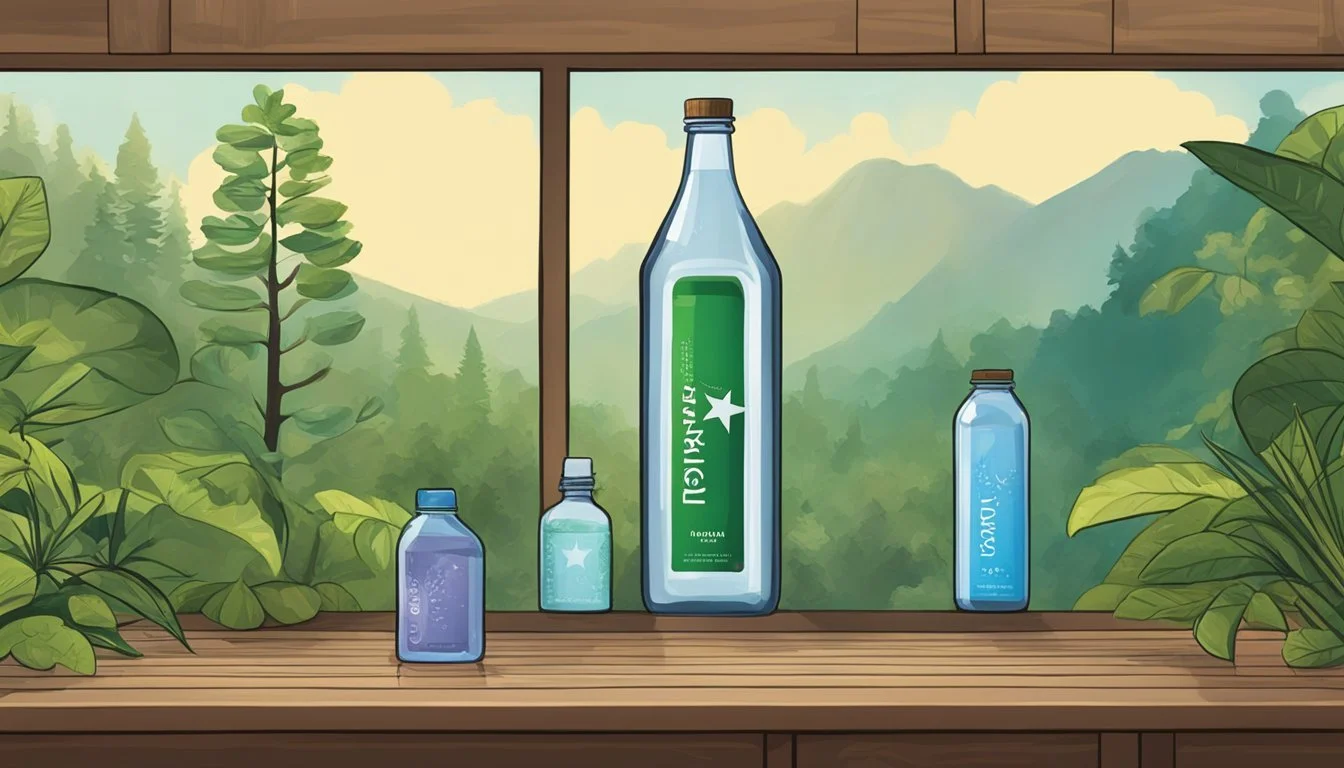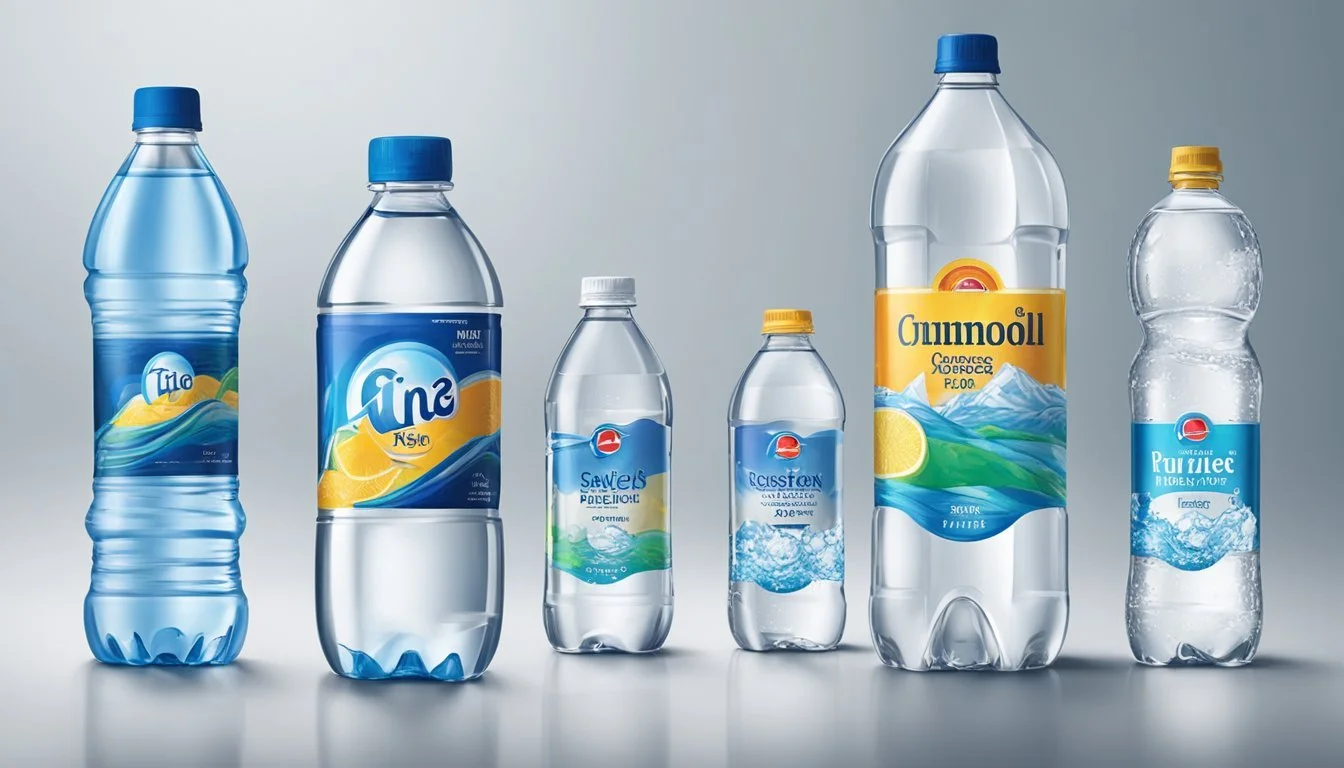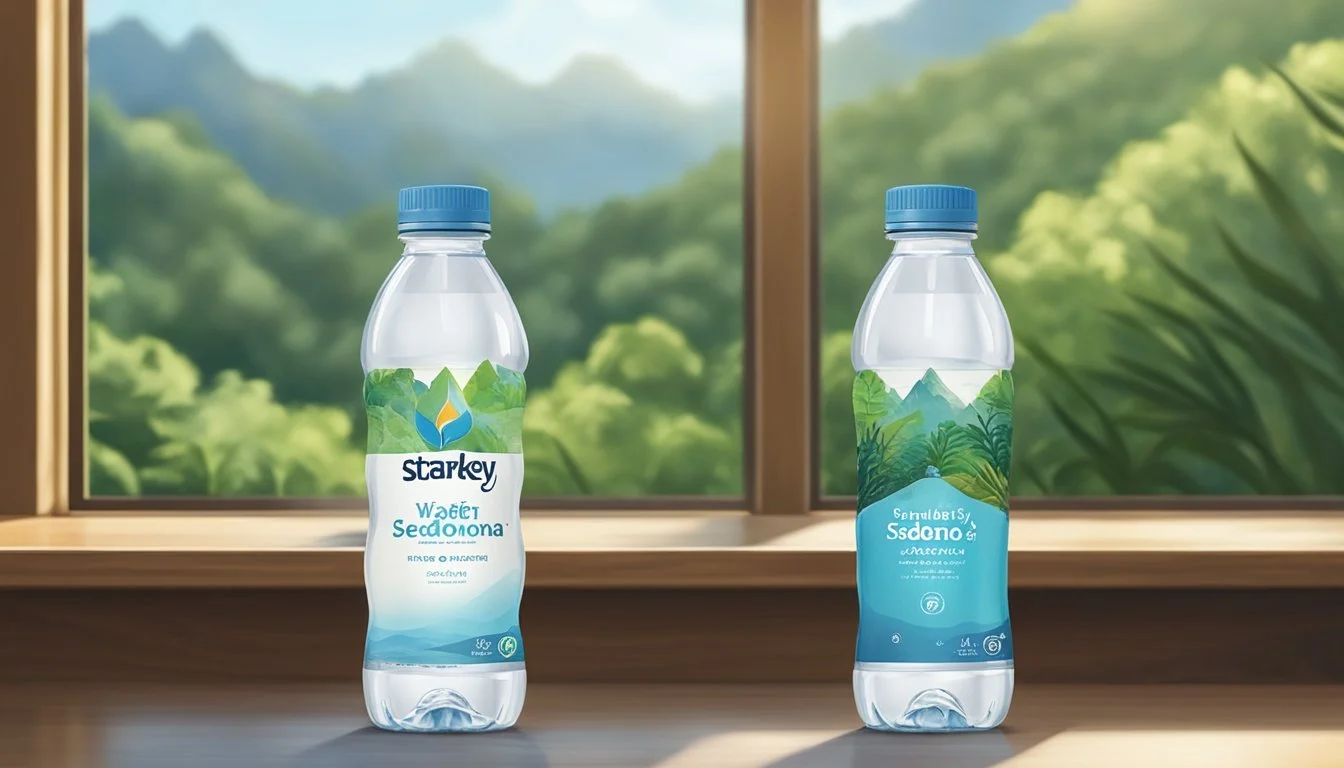Starkey vs. Purely Sedona
Which Bottled Water is Better? Find Out Here
Choosing the right bottled water can be a daunting task with so many brands available. Starkey and Purely Sedona stand out for their distinct characteristics, but which one is better for you? Starkey water is known for its clean, crisp taste sourced from deep geothermal aquifers, making it a popular choice for those who prioritize natural mineral content.
Purely Sedona, on the other hand, emphasizes its balanced mineral profile and eco-friendly bottling practices. This brand is praised for its fresh taste and dedication to sustainability, appealing to environmentally conscious consumers. For those who care about both taste and a lighter environmental footprint, Purely Sedona might be the better option.
Both Starkey and Purely Sedona offer unique benefits that cater to different preferences and priorities. By understanding what each brand brings to the table, consumers can make an informed decision that aligns with their personal hydration needs and values.
Understanding Bottled Water
Bottled water comes in many forms, from various sources, and undergoes distinct processing methods to ensure safety and quality. This exploration will cover key types of bottled water, the bottling processes involved, and the safety measures in place.
Types of Bottled Water
Bottled water can be categorized primarily into spring water, mineral water, purified water, and sparkling water.
Spring Water: This water is sourced directly from an underground aquifer, collected at the spring or through a borehole. It retains natural minerals and has a clear, refreshing taste.
Mineral Water: Distinguished by its naturally occurring dissolved minerals and electrolytes, mineral water is collected from mineral springs. It's often popular for its unique taste and perceived health benefits.
Purified Water: This type includes water that has gone through processes like distillation, deionization, or reverse osmosis to remove impurities and contaminants. The result is a product that's often free from most minerals.
Sparkling Water: Infused with carbon dioxide gas, this water has a bubbly texture. It can be sourced from natural occurring carbonated springs but often carbon dioxide is added manually.
Bottling Processes
The bottling process varies depending on the type of water but generally involves several stages.
Filtration and Treatment: Water is filtered to remove particles and pathogens. Reverse osmosis and distillation are common methods for purified water, ensuring safety and improving taste by removing contaminants.
Contaminant Removal: Depending on the source, steps are taken to remove heavy metals like lead or other harmful substances.
Mineral Adjustment: For some types, minerals might be added or retained for taste. This is typical in fortified waters or waters looking to maintain a specific flavor profile.
Bottling and Sealing: Once treated, water is transported to bottling facilities where it's bottled and sealed in sterile environments to ensure no contamination occurs post-treatment.
Safety and Quality Assurance
Ensuring the safety and quality of bottled water is crucial.
Regulatory Standards: Bottled water is subject to stringent regulatory standards. Agencies like the FDA oversee the production to ensure it meets safety guidelines.
Testing for Contaminants: Regular testing for contaminants such as bacteria, lead, and other toxins is necessary. This ensures the water meets health standards and is free from harmful substances.
Quality Certifications: Many companies seek certifications that validate their products' safety and quality. These certifications often involve rigorous testing and verification processes.
By focusing on these aspects, bottled water companies aim to provide a product that is not only safe but also high in quality and taste.
Comparative Analysis of Starkey and Purely Sedona
Starkey and Purely Sedona offer distinct features in terms of source, quality, taste, and health benefits. This section will help understand these aspects for a well-informed choice.
Source and Origin
Starkey water is sourced from a geothermal spring at 2 miles depth in Idaho. It boasts a unique origin due to its deep, geothermal sources providing naturally filtered water with a distinctive mineral profile.
Purely Sedona, on the other hand, is bottled from natural springs in Sedona, Arizona. The water flows from an aquifer located beneath the red rock mountains, known for its purity and natural filtration.
Quality and Purity
Starkey water undergoes minimal processing to preserve its natural qualities. Its quality and purity are consistently maintained, and it is free from industrial contaminants due to its deep underground source.
Purely Sedona emphasizes rigorous filtration and quality control to offer clean and pure water free from impurities. The region's natural filtration process enhances its purity.
Taste and Mineral Composition
Starkey water has a distinct taste due to its unique mineral composition. It contains notable levels of calcium, magnesium, and bicarbonate, contributing to a refreshing taste.
Purely Sedona offers a more neutral taste with balanced mineral content. The water is smooth, owing to its natural filtration through the sedimentary rock.
pH Levels and Health Benefits
Starkey water has an alkaline pH level, around 9.0, which may offer potential health benefits such as improved hydration and acid neutralization in the body.
Purely Sedona typically has a slightly alkaline to neutral pH level. It may promote overall well-being and hydration due to the balanced mineral content.
Environmental Impact and Sustainability
Both Starkey and Purely Sedona prioritize reducing their environmental footprint by focusing on sustainable practices across packaging, sourcing, and carbon footprint management. Examining their efforts in these areas reveals their commitment to preserving the planet while providing quality bottled water.
Packaging and Waste Reduction
Starkey uses glass bottles to minimize plastic waste, which is significant because glass is more recyclable than plastic. However, glass production does consume more energy, posing a different kind of environmental challenge.
Purely Sedona, on the other hand, offers water in eco-friendly plastic that is partially recyclable. While this reduces immediate waste, it still contributes to overall plastic waste issues. Some regions offer boxed water alternatives for both brands, further diversifying sustainable packaging options.
Sustainable Sourcing
Starkey sources its water from natural springs with strict water management practices. This ensures minimal disruption to the environment and helps maintain natural aquifers.
Purely Sedona draws its water from similar natural springs. The company emphasizes sustainable harvesting methods to maintain the natural ecosystem around their water sources. Both brands prioritize sustainable sourcing to balance production demands with environmental preservation.
Carbon Footprint
Starkey actively works on reducing its carbon footprint by implementing energy-efficient processes and utilizing renewable energy sources in its production facilities. The use of glass bottles, despite their heavier weight, is managed through optimization of their distribution network to minimize overall emissions.
Purely Sedona opts for lightweight eco-friendly plastics and efficient transportation strategies to cut down on emissions. Additionally, both brands engage in carbon offset programs to neutralize the environmental impact of their operations where possible.
By focusing on these key areas, Starkey and Purely Sedona demonstrate their commitment to sustainable and environmentally friendly practices in the bottled water industry.
Consumer Preferences and Brand Perception
Starkey and Purely Sedona are both notable brands in the bottled water market, each catering to different consumer tastes, health needs, and levels of brand loyalty. This section explores the various aspects that influence consumer preferences and perceptions.
Flavor Profiles
Consumers often prioritize flavor when selecting bottled water. Starkey water is known for its crisp and clean taste, attributed to its high mineral content. This gives it a subtle earthy undertone that many find refreshing.
Purely Sedona, on the other hand, boasts a pure and clear taste. Its near-neutral pH level ensures a smooth profile, free from any tangy or metallic aftertaste. For those who appreciate a neutral flavor without any distinct mineral taste, Purely Sedona is a preferred choice.
Hydration and Health
Health-conscious consumers often assess bottled water based on its role in hydration and overall well-being. Starkey water is revered for its high mineral content, which includes essential electrolytes like sodium and potassium. These minerals are crucial for muscle function and maintaining electrolyte balance.
Purely Sedona appeals to those who prefer a more balanced pH and pure hydration experience. It’s sourced from natural springs and is minimally processed, making it an excellent option for daily hydration. Both brands ensure safe and clean drinking water, but Starkey's added minerals might be better suited for active individuals needing extra muscle support.
Brand Loyalty and Trust
Brand perception and loyalty play significant roles in customer choices. Starkey is often associated with premium quality and a reliable source, thanks to its transparent sourcing and bottling process. Its distinct taste and health benefits also foster a strong consumer following.
Purely Sedona is perceived as a brand rooted in local heritage and purity. Its marketing emphasizes natural sources and minimal processing. This trust and authenticity resonate with consumers seeking a more eco-friendly and local option.
Both brands have built a loyal customer base, but their differing strategies and commitments to quality shape how they are perceived in the market.
Market Comparison and Alternatives
In the competitive landscape of bottled water, Starkey and Purely Sedona bring unique qualities to the table. This section examines essential factors such as price, brand competition, and accessibility to help consumers make informed decisions.
Price Point
Pricing is a significant factor for consumers selecting between Starkey and Purely Sedona. Starkey often markets itself at a premium price, appealing to those seeking high-quality, mineral-rich water. Purely Sedona's pricing tends to be slightly lower, positioning it as an attractive yet upscale alternative. When considering popular alternatives, Evian and Fiji also fall into the higher price bracket, while Aquafina and Dasani offer more budget-friendly options.
Price Comparison Table:
Brand Price Range (USD per liter) Starkey $2.50 - $3.00 Purely Sedona $2.00 - $2.50 Evian $2.75 - $3.25 Fiji $3.00 - $3.50 Dasani $0.99 - $1.50 Aquafina $0.99 - $1.25
Comparing Major Brands
Consumers have a variety of bottled water brands to choose from, each with distinct characteristics. Starkey and Purely Sedona are prominently known for their unique mineral profiles and high purity standards. Evian and Fiji are also highly regarded for their mineral content and clean taste, often marketed as luxury options. Dasani and Aquafina primarily dominate the market for value-based, widely available bottled water options without the premium pricing.
Starkey and Purely Sedona aim to establish themselves as niche products catering to discerning consumers who prioritize mineral content and source purity. Conversely, brands like Smartwater offer a middle-ground option with enhanced electrolytes and accessible pricing.
Accessibility and Availability
Availability is another critical factor. Purely Sedona is commonly available in upscale grocery stores and specialty shops, making it relatively accessible for its target market. Starkey, while also available in high-end stores, can sometimes be harder to find, adding to its exclusivity appeal.
Dasani and Aquafina are widely distributed and can be found in almost every retail outlet, including supermarkets, convenience stores, and vending machines. In contrast, Evian and Fiji are available in a wide range of stores but are more prevalent in locations that cater to higher-end clientele.
Smartwater strikes a balance in availability, found in mainstream retail as well as specialty health stores, appealing to a broad consumer base.
Conclusion
Starkey and Purely Sedona both offer unique benefits, making the choice between them largely dependent on individual preferences and needs.
One key factor is pH. Starkey water is known for its natural alkaline properties, which some believe can aid with acid reflux and digestive health. On the other hand, Purely Sedona generally maintains a neutral pH, appealing to those who prefer water that is neither too acidic nor too alkaline.
Price is another consideration. Starkey tends to be pricier due to its premium branding and the source of its water. Purely Sedona is more budget-friendly, making it accessible to those who are more cost-conscious.
Branding and marketing play a role as well. Starkey prides itself on its superior quality and sophisticated branding. Purely Sedona, meanwhile, emphasizes its purity and local heritage, making it a popular choice among those who value authenticity and regional ties.
For those prioritizing a higher pH and premium experiences, Starkey may be the recommended choice. However, if affordability and a pure, neutral taste are more crucial, Purely Sedona could be the better option.
Both brands have their strengths, so the bottom line comes down to personal preference and specific needs. By weighing the factors of pH, price, and brand values, consumers can make an informed choice that best suits their lifestyle and tastes.
More About Starkey
Icelandic Glacial vs Starkey: Which Bottled Water is Better?
Mountain Valley Spring Water vs Starkey: Which Bottled Water is Better?
Starkey vs Kirkland Signature: Which Bottled Water is Better?
Starkey vs Richard's Rainwater: Which Bottled Water is Better?
Starkey vs Whole Foods Italian Still Mineral water: Which Bottled Water is Better?






